New Paris Spots to Visit for Anyone Who's Dreamed of Going
The author of The New Paris shares a few must-try places to eat and drink that are changing the French culinary scene.
By Lindsey Tramuta
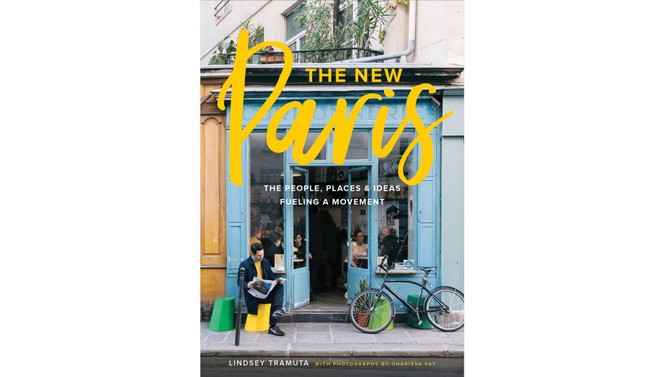
Photo: Charissa Fay
With its reputation for superior produce and technical excellence, France continues to attract a diverse group of gifted chefs. And it is largely thanks to these foreign and French-born young talents who either trained or worked outside of the country that energetic revival has been spurred, reinventing and even democratizing modern French cuisine in the process. Because of their contributions, the city has regained it serious culinary cred and, in the process, diverted mouths east from the left bank, once the reigning hub of stuffy fine dining, to the dynamic and culturally diverse right bank. Paris's resurgence as one of the world's culinary capitals also marked a turning point in Parisian perspective: Locals were finally ready to embrace outside influences, on all levels of the food chain.
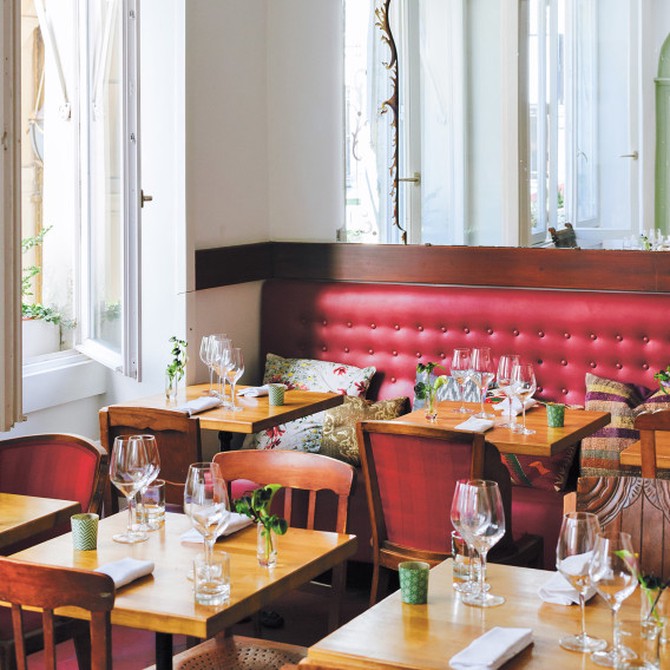
Photo: Charissa Fay
1. Verjus
Verjus has drawn customers and critical acclaim by giving traditional American food tropes a fresh spin, using French ingredients and even incorporating Asian flavors.
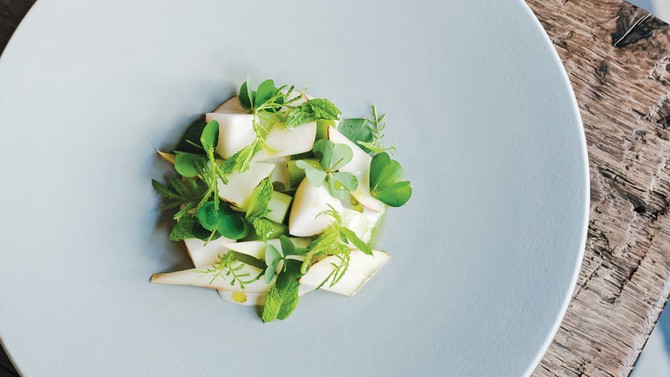
Photo: Charissa Fay
2. Septime
"In France, we have a strong fish tradition, but brasseries have typically been the only places to eat seafood, and they're no good," Bertrand Grébaut, chef and co-owner of Septime, told me. So he took a more modern approach, pairing food with simple, classic cocktails like the Bloody Caesar or Gin & Tonic, both of which have gotten the imprimatur of the city's leading barmen.
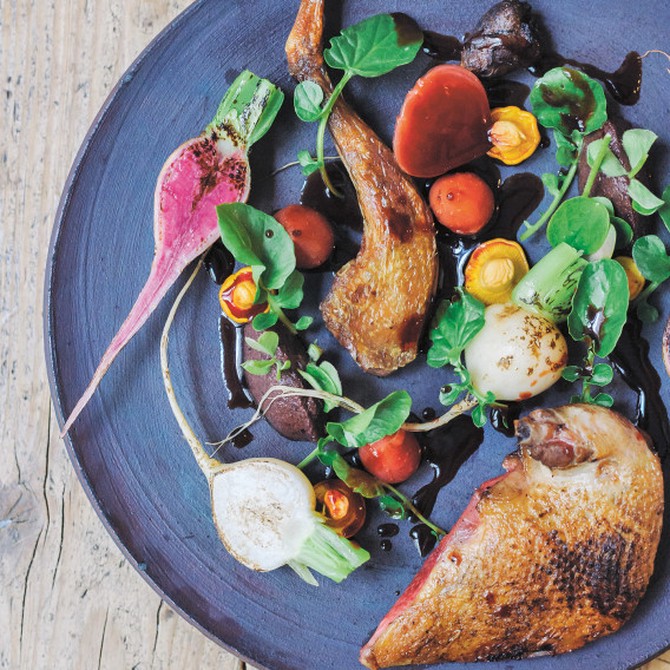
Photo: Charissa Fay
3. Dersou
Chef Taku Sekine and mixologist Amaury Guyot of Dersou, named Best Table of the Year 2016 by Le Fooding. A dish of roasted pigeon, girolle mushrooms, radishes, beetroot, and hibiscus beetroot sauces exemplifies chef Taku Sekne's boundless love and respect for French ingredients and is meant to be paired with a cocktail that complements, never overpowers, the flavors in the food.
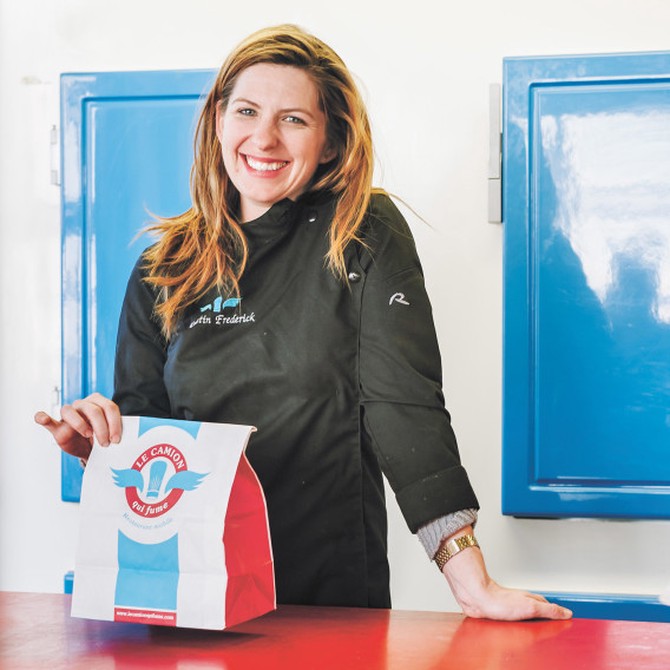
Photo: Charissa Fay
With her celebrated burger truck Le Camion Qui Fume and no-nonsense approach to quality hamburgers, Kristin Frederick not only arrested the city's attention but also pioneered a movement that saw hundreds upon hundreds of comfort-fast-street-food entrepreneurs apply for permits to get their own food trucks on the road. She was the ultimate avatar of what was to become gussied-up comfort food in Paris. Today, her petit empire has expanded to four trucks, one boat, one physical restaurant, and ancillary businesses like Huabu, her American take on Chinese food, and gourmet popcorn she supplies to movie theaters.
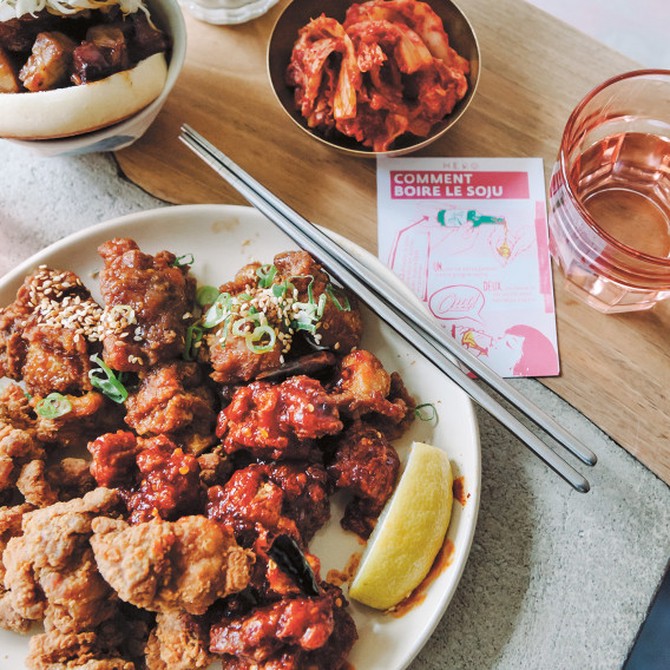
Photo: Charissa Fay
5. Hero
The vibe may be laid back and fun but the details at Hero are exacting, from plate to design. Selected for her inexperience working in Paris, Swedish designer Jeanette Dalrot was tapped by the Quixotic Projects trio for the interior, and she brought not only fresh eyes but also fresh style to the scene. A large, communal wash basin takes pride of place at the center of the dining room as a clear indicator that forks and knives are in rare supply: Here, guests eat with their hands. Faded pink banquettes, gold sconces, hand-painted wallpaper, handcrafted lamps covered in old book pages, and wall projections, which include clips from Korean music videos, establishes a singular sense of space on the top-floor dining room.
"Did Paris need Korean barbecue? Probably not," said Josh Fontaine about Quixotic Projects's fourth project, Hero. "But we try to bring interesting and fun experiences to the food scene that add value." For the Parisian diner, the menu at Hero may read like a map into the unfamiliar—ssamjang pork buns, yangnyeom chicken (gochujang sauce, sweet and sour garlic sauce, or plain), kimchi, and rice cakes—but Korean comfort food has found a willing audience.
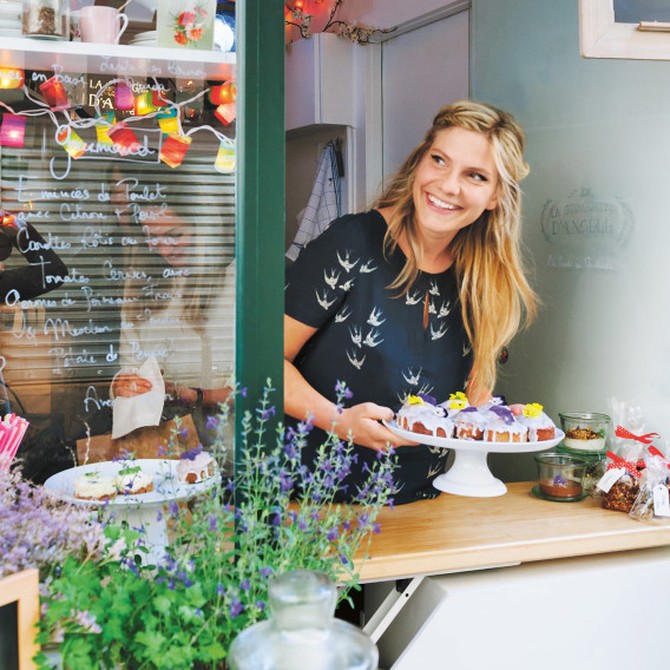
Photo: Charissa Fay
Baking in the virtuous glow of a gluten-free and almost entirely plant-based diet, Angèle Ferreux-Maeght smiles brightly for the curious Parisians who drop by La Guinguette d'Angèle, her adorable sliver of a "detox" counter, to pick up their lunch provisions. Her stints in San Francisco (notably at an organic produce stand in the Ferry Building) and Australia, both universal hubs of green living, inspired her path toward naturopathy. Back in Paris, she got her start catering fashion shows and events where the most common request was "vegan and gluten-free" nibbles. It was a tall order at first, given that most Parisians were only just beginning to understand vegetarianism and veganism. Now with a bestselling book behind her, Délicieusement Green, she says the interest goes well beyond trend. "Those who try out this sort of eating truly feel a difference: more energy and improved wellness overall. Its message is simple and will continue long after me: Eat healthy, with a conscious mind, and full of joie de vivre!
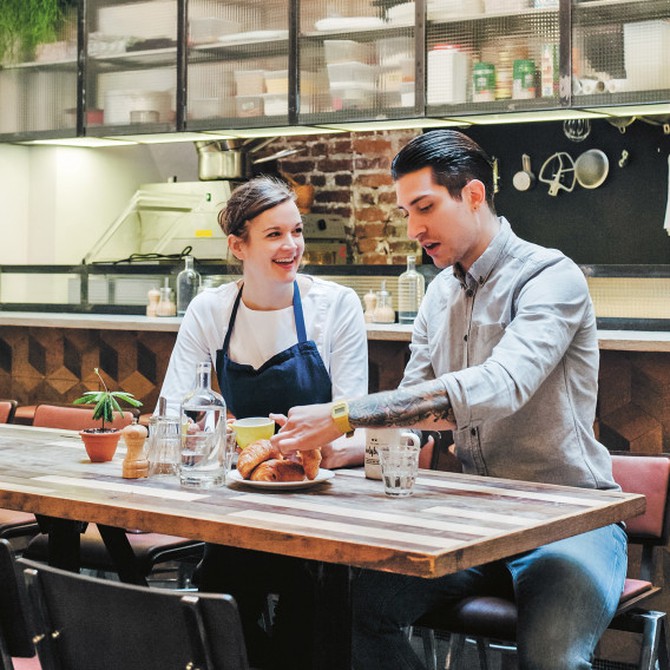
Photo: Charissa Fay
7. Holybelly
Holybelly was the lone ranger in the realm of mixing good coffee and good food when they opened in 2013 and have been the ne plus ultra in brunch ever since. You would think, as I did, that it should be easy enough to offer quality food and quality coffee under the same roof, especially in a city of such culinary might and sensitivity to taste. But even now, several years after Holybelly first opened, no other establishment has been able to replicate or even approximate their simple but unequivocally good approach to both. And that's true on all fronts: food, beverage, service, and design.
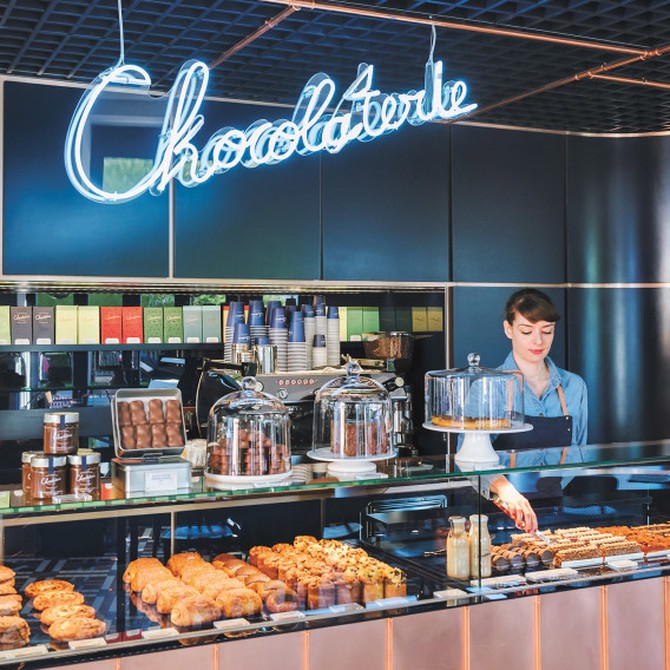
Photo: Charissa Fay
Michelin-starred chef Cyril Lignac, whose pastry shop La Pâtisserie has made its mark on the 11th arrondissement, launched a chocolate-focused outpost in 2016—his personal contribution among the phlanx of chefs working to preserve French savoir faire in chocolate making. Lignac devised La Chocolaterie as an alternative to the jewelry-box preciousness of most chocolate shops. "Everything here is meant to be accessible," Lignac told me the day before it opened to the public. "People can come drink our homemade hot chocolate, share a pastry, read the paper, and stay awhile comfortably. It's designed to be an everyday café for chocolate lovers."
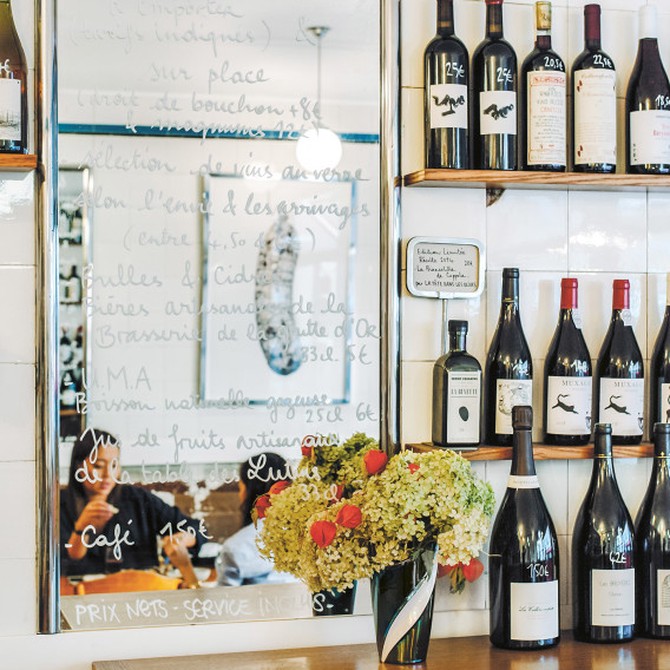
Photo: Charissa Fay
9. La Buvette
Camille Fourmont of Buvette, the most beloved little cave à manger on the east side of Paris, is trenchant about the marketization of natural wine. "The idea isn't to say that a bottle or glass is good simply because it's natural; this shouldn't be about trend. You must be able to discern what is good and what the flaws are in the wine that shouldn't be there. The conviction behind natural wine begins with the way it's made, then you consider taste. If it isn't good, I won't add it to my selection." Heed Fourmont's recommendations and try one of her more obscure wines, then pair it with one of her many unfussy but stunningly delicious small plates like fresh burrata with Sicilian olive oil from Cédric Casanova of La Tête dans les Olives, sardines with smoked salted butter and lemon chips, fresh hummus, or artisinal cheeses. The space is modest with only a few seats, so don't hesitate to take your bottle to go.
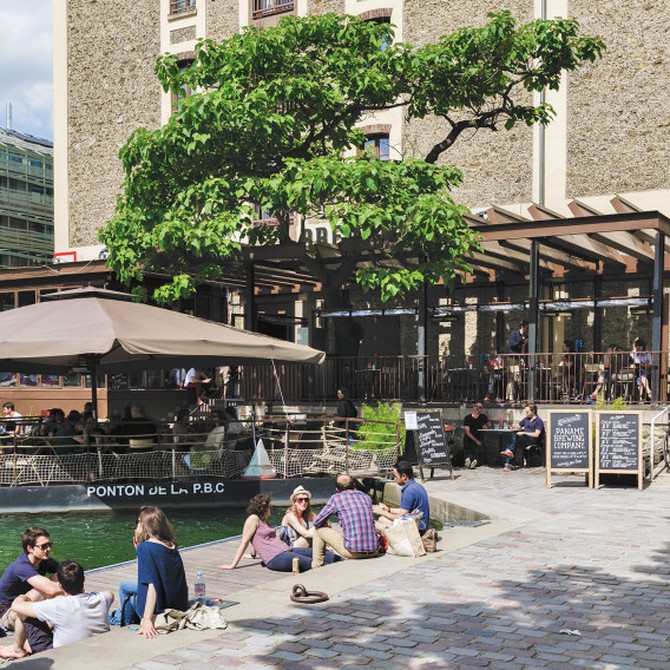
Photo: Charissa Fay
With its five craft beers produced on-site and a gorgeous veranda overlooking the banks of the Bassin de la Villette, a former port during the industrialization of waterways for trade in Paris and the largest artificial body of water in Paris, the Paname Brewing Company (PBC) has more than enough winning qualities to draw crowds. And they've come in droves since the brewpub opened in 2015, bringing even greater visibility not only to craft brewing but also to a section of the 19th arrondissement that has long been considered off the beaten path, even for locals. PBC sits alongside other cultural and leisure venues revitalizing the canal.
Excerpted from The New Paris: The People, Places & Ideas Fueling a Movement by Lindsey Tramuta. Text copyright © 2017 by Lindsey Tramuta. Photographs copyright © 2017 by Charissa Fay. Reprinted with permission by ABRAMS.
Published 07/22/2017

